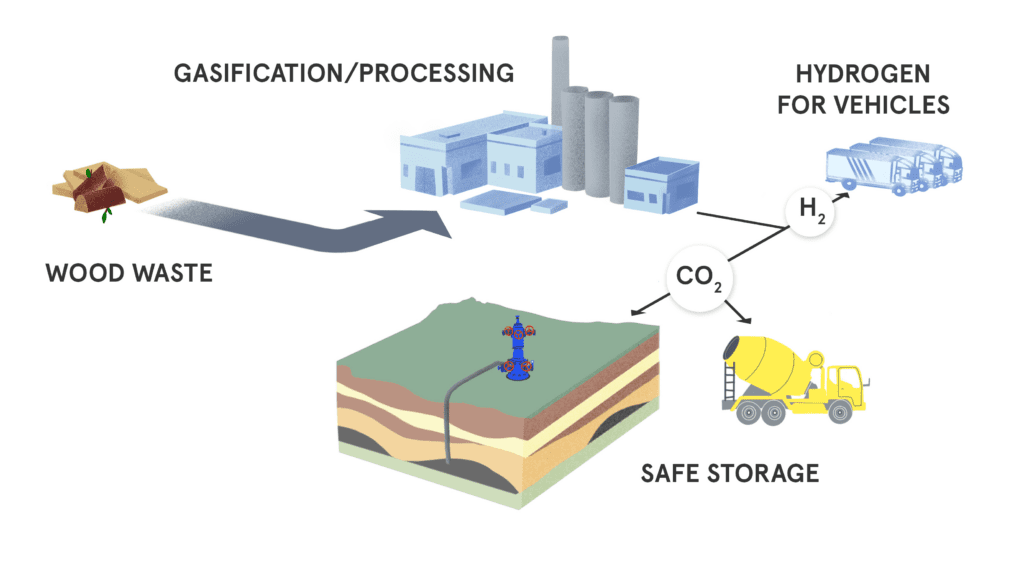A new demonstration plant near Bakersfield, Calif. will produce carbon-negative “green” H2 from woody biomass waste, such as agricultural residues from orchard trees and walnut shells. Developed by Mote, Inc. (Los Angeles, Calif.; www.motehydrogen.com), with engineering partners Fluor Corp. (Irving, Tex.; www.fluor.com) and SunGas Renewables (Houston; www.sungasrenewables.com), the plant will be designed for 7,000 metric tons per year (m.t./yr) of H2 production, alongside 150,000 m.t./yr of carbon capture and storage (CCS) capacity, with startup expected by 2024.

Source: Mote
“The plant is demonstrating the first-ever system integration of biomass gasification, CO2 geologic storage, a syngas water-gas shift (WGS) reaction and H2 purification. “Using waste biomass as our feedstock gives us an incredible value stream of taking CO2 out of the air and producing clean H2 for the transportation market at the same time,” explains Joshuah Stolaroff, Mote co-founder and chief technology officer.
Adapting the principles of coal gasification for biomass, the process gasifier acts as a pressurized, fluidized bed that is oxygen-fired, wherein woodchips are converted to a synthesis gas (syngas) stream consisting of mainly CO and H2 — unlike in coal gasification, there is little sulfur or N2 to deal with. “When we get the syngas that comes out of the gasifier, we purify it for the subsequent WGS reaction. There, we react the CO with water to make more H2 and CO2. That is one approach that sets us apart from other biomass gasification projects that have been proposed,” adds Stolaroff. Several H2-purification steps follow to separate the CO2 and to remove particulate and tar impurities before the H2 is compressed to 700 bars for transportation. The CCS portion of the process will employ Fluor’s proprietary system based on a propylene carbonate solvent. According to Stolaroff, the demonstration plant is one-third the scale of Mote’s proposed full-scale plant. In the future, the company is planning to fine-tune the WGS catalyst for specific biomass compositions and evaluate other CCS schemes, including cryogenic and membrane-based technologies.